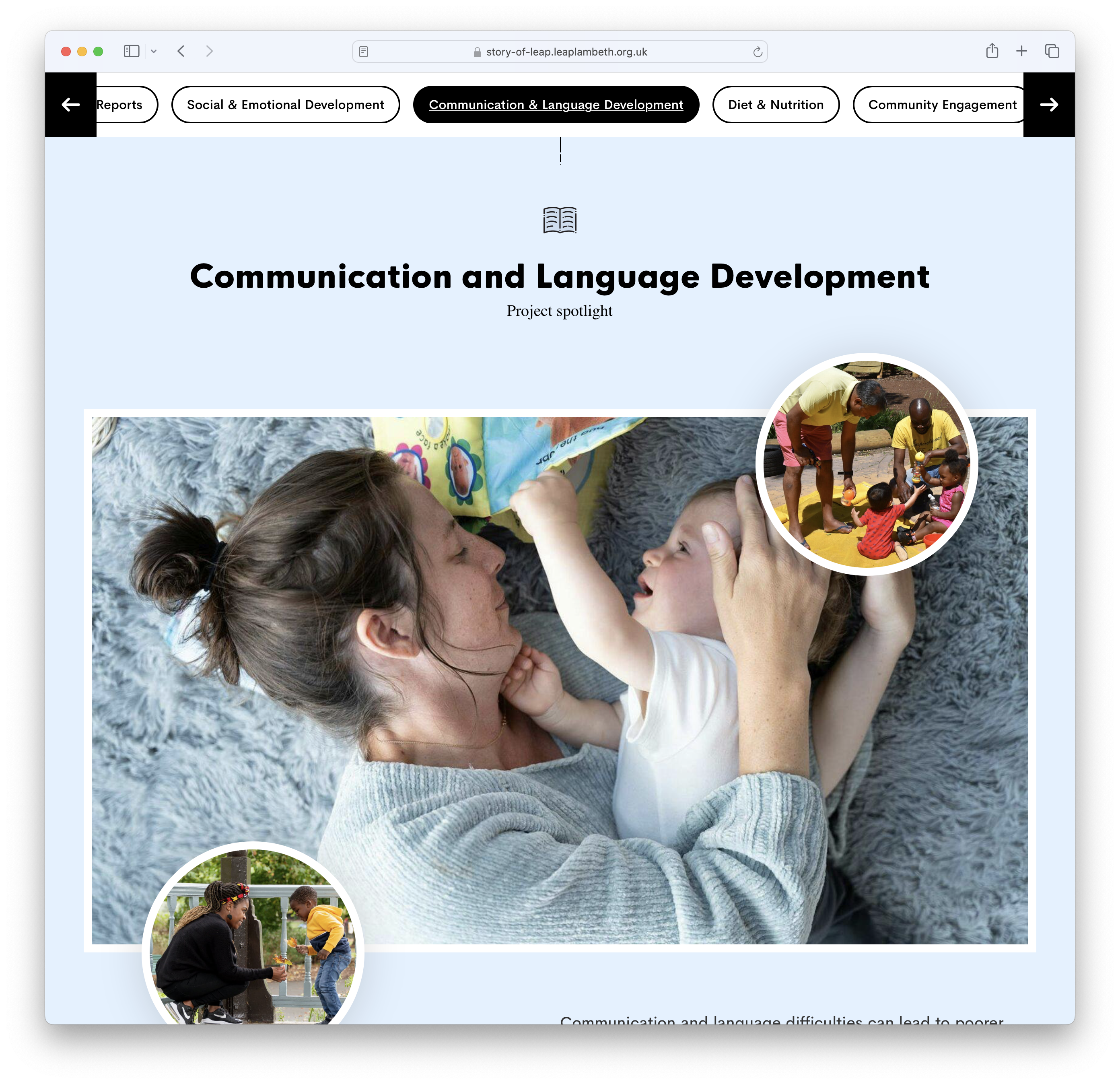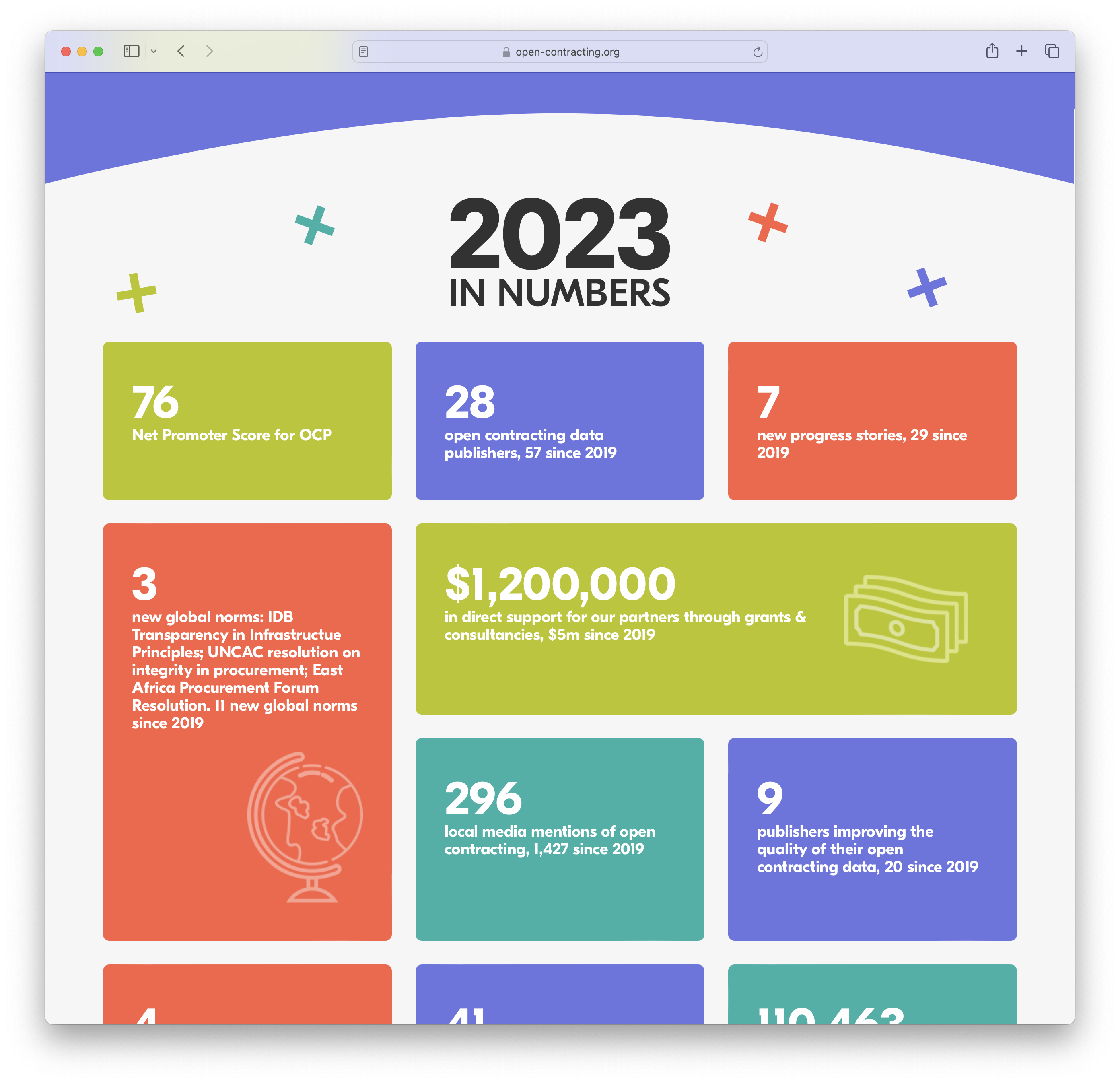Making impact reports engaging and accessible for your audience
We are keen advocates for an open, accessible and beautiful web here at The Idea Bureau, it’s something to be celebrated and embraced when it comes to our collective online communications. We see in the not-for-profit sector that teams are comfortable leaning into this for their websites, but seemingly not so much for larger pieces, such as impact reports.
Typically organisations will create these documents as PDFs, a decision rooted in when printed documents were more commonplace, as that’s becoming less of a concern for most let’s explore the benefits of a web-based approach to your impact reports.
Superior reading experience on any device
Sure a PDF is a known quantity, a fixed document that’ll provide the same experience across all devices, but at the expense of the reading experience for the user. For many of our non-profit partners, we’re seeing mobile and tablet use continue to gain, if not surpass desktop traffic, and we know that devices vary wildly when it comes to size, orientation and quality, so a one-size-fits-all approach doesn’t work anymore.
Taking full advantage of the responsive web means our documents can react to the user’s browser and device, tailoring their reading experience much more specifically to them, and in a far superior way than trying to read an A4 PDF on a mobile phone.
Image quality can also be controlled to be much more considerate of the end-user, whether that’s serving smaller images to someone on a lower-quality device to reduce download time, or allowing a high-quality device to download higher-resolution images to bring maximum impact, it works for everyone.
Naturally, we can also include interactive elements, such as embedded videos, charts, surveys and design animation.

Accessibility enhanced for all
Web-based documents can make the most of browser accessibility features allowing more users to engage with your content. In addition, search engines can take advantage of the page structure to make it available to your users for searching, something that’s not as effective with PDF documents.
PDFs will typically be relatively large documents, and the entire document must be downloaded at once, whereas the loading of images and embedded media on the web can be delayed until it’s likely to be viewed, reducing the amount of the website downloaded and making the initial experience far quicker.
Improving engagement and gaining insights
Tracking engagement on a PDF will stop when the file is downloaded, it’d be next to impossible to understand how many repeat views it gets, how long someone spends reading the report, and what sections they focus on the most. This missing context would be beneficial for making future decisions, and of course, these are metrics we can keep on top of with analytics and behaviour analysis tools on the web.
The web page will also remain fully in your control, meaning adjustments and updates can all be easily made so all future views see the correct content, something that is out of your control when a user downloads an offline copy of a PDF, and perhaps shares with a friend.
Web pages are far easier to share also, and when doing so a rich preview will be displayed alongside the link on social media and messaging apps.
Whilst not impossible with PDFs, specific calls to action will be more effective on the web, incorporating the report into the wider website.

What if creating a full web report is not feasible?
We appreciate that creating a full web version of an impact report may not always be feasible, whilst tools such as WordPress’ Gutenberg make it easy to construct a report based on blocks where it’s easy to create and maintain, a good alternative is a web-based summary of the document, where you can highlight and celebrate the key points, giving the user a reason to read further.
No matter what the best option is for your organisation, we can help make sense of the benefits and input needed to make your reports stand out.